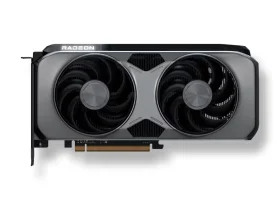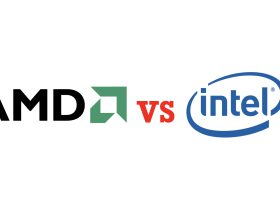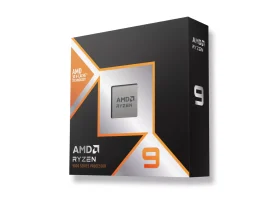Apple’s new M4 MacBook Pros, released on October 29, 2024, have arrived, marking a significant leap forward in performance for the brand. While the exterior design of the 14- and 16-inch MacBook Pros hasn’t seen much change, it’s the inner components—specifically, the M4 chip—that make these devices worth discussing. Alongside the MacBook Pros, Apple also released the M4 Mac Mini, hailed as the ultimate compact powerhouse. Packed with options for the M4 Pro and M4 Max, these MacBooks come equipped with several advanced features and enhancements that position them as a compelling choice for professionals, creatives, and tech enthusiasts.
M4 Chip Performance: Faster, More Capable
The M4 chip, previously introduced in this year’s iPad Pro, now powers the latest iMacs, Mac Minis, and MacBook Pros. Apple offers the M4, M4 Pro, and M4 Max versions, each boosting performance beyond the previous M3 models and significantly outperforming the M1. If you’re considering an upgrade, the M4 series delivers a noticeable speed increase, ideal for users who rely on their MacBooks for intensive tasks.
The M4 Pro and Max come with selectable power modes, allowing users to toggle between low and high-power settings based on their activity. This feature enables performance adjustments that can help conserve battery life or maximize processing power. Benchmark tests, such as Geekbench 6, reveal the M4’s improved capabilities, showcasing performance gains in both everyday use and high-demand applications.
Enhanced Power Modes and Battery Life
Apple has optimized the M4 MacBook Pro’s battery life, with the company claiming up to 24 hours of use on a full charge. Real-world tests show the M3 MacBook reaching 21 hours, so this additional boost in battery life appears credible. Users can switch between automatic, low, and high-power modes directly from the battery settings. While high-power mode enhances gaming and other graphics-intensive activities, it does impact battery life, making low-power mode preferable for routine tasks.
Advanced Neural Engine and Apple Intelligence
The M4 series includes an updated neural engine, which significantly accelerates on-device AI tasks. With features under Apple Intelligence, the MacBook now supports advanced tools for email management, message summarization, and notification control. In the Photos app, Apple’s new “Cleanup” tool allows users to quickly remove unwanted elements in photos, a function that works remarkably well, though it may still struggle with intricate backgrounds.
Thunderbolt 5 and Nanotexture Display Options
The latest M4 Pro and Max models also introduce Thunderbolt 5, which doubles the data transfer speed compared to Thunderbolt 4. This upgrade enables users to connect higher-resolution displays and handle more bandwidth-demanding tasks. The new MacBooks can support up to three 6K 60Hz monitors simultaneously, making them suitable for multi-display setups.
Apple also added a nanotexture display option, which reduces reflections and glare. This feature makes the MacBook easier to use outdoors and in bright environments. With a brightness of up to 1,000 nits in SDR mode, this $150 upgrade enhances visibility in varied lighting conditions, a boon for users working on the go.
Upgraded Center Stage Camera and Desk View
In response to increasing demands for better video communication, Apple has upgraded the MacBook Pro’s webcam to a 12-megapixel Center Stage camera, replacing the previous 1080p version. The camera now features a “desk view” that uses a virtual camera to display what’s on your desk, ideal for presentations or demonstrations. While the quality of this digitally zoomed second view may vary, it’s a handy tool for video calls, especially for users who want to share physical objects or documents without moving the camera.
M4 Max: Unparalleled Performance and Gaming Capabilities
For those considering the M4 Max model, the performance gains are impressive, particularly in GPU tasks. Despite sharing the same number of cores as the M3 Max, the M4 Max outperforms its predecessor thanks to a memory bandwidth increase from 400GB/s to 546GB/s. Benchmarks such as PugetBench for Photoshop reveal that the M4 Max surpasses the M2 Ultra in the Mac Studio, scoring 15% faster than the M3 Max. In applications like DaVinci Resolve, the M4 Max shows improved rendering times, making it an excellent choice for video editors.
Gaming on the M4 Max is better than ever on a MacBook Pro. Although it doesn’t rival dedicated gaming laptops, titles like Hades 2 and Cyberpunk run smoothly, especially in high-power mode. For lighter games or users who game occasionally, this laptop can handle it, though Mac’s game library remains limited compared to PCs.
Enhanced Everyday Use and Battery Life Improvements
The M4 Max model now also boasts improved single-core and multi-core speeds, with increased efficiency for everyday tasks such as web browsing and productivity software. Apple has maintained a focus on battery optimization, advertising two extra hours of battery life on the new models. In tests, users note a marked improvement, with extended video editing sessions showing less battery drain. This extended battery life is particularly useful for users who rely on their MacBook for all-day use without frequent charging.
Final Thoughts: Is the M4 MacBook Pro Worth the Investment?
For anyone using an M1 or earlier model, the M4 series offers a substantial performance boost that justifies the investment. The upgrades in GPU performance, battery life, camera capabilities, and connectivity with Thunderbolt 5 make it an attractive choice for power users. The nanotexture display is a compelling option for those frequently working in bright or outdoor settings. However, for users considering an M3 MacBook Pro at a discount, the M4’s added benefits may not justify the higher cost unless those features are essential to their work.
The M4 MacBook Pro represents a blend of performance and flexibility, allowing professionals and creatives to leverage powerful processing in a portable package. The choice between the M4 Pro and M4 Max will depend on your specific needs, but for most users, the M4 Pro strikes the right balance of power and affordability. For those who require maximum performance, the M4 Max delivers unmatched capability, particularly in graphics-intensive workflows.






